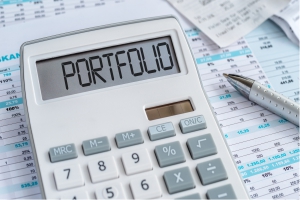Never place all your eggs in one basket! This has been an age-old saying which is applicable across all walks of life; including the management of your investment portfolio. It simply tells you that when you create an investment portfolio, you should spread your investments across multiple asset classes, i.e., diversify your portfolio. Diversification or the act of spreading of investments ensures that your returns are not severely impacted or wiped out due to adverse market movements.
And there is science behind this ancient wisdom too! The total risk of any portfolio is dependent upon how the assets within the portfolio are correlated, greater the correlation, greater the risk and vice versa. For example, if all your investments are only in the banking sector, then any event that impacts banks in general, say a report on rising NPAs or interest rates, may drag down your entire portfolio. It is therefore very important that your portfolio consists of - (i) different asset classes with varying degrees of correlation and (ii) different investments within those asset classes which are not correlated with one another.
How many mutual funds are too many?
From the perspective of diversification, mutual funds can be an ideal investment choice as they are spread across different asset classes and investment strategies. Now, the thing about diversification is that it needs to be done right. Diversify way too little, and your portfolio is prone to various risks; diversify way too much, and you don’t stand to gain returns. In simple terms, while diversification is absolutely necessary, there also exists the fact that too much diversification is meaningless. This brings us to the most important questions, how many mutual funds are too many and how many mutual funds should I have in my portfolio?
What an ideal mutual fund portfolio looks like?
Before we try to answer this question, you need to understand that mutual funds are of varying types with different investment objectives - active, passive, equity-based, debt-based, commodity-based, open-ended, close-ended, etc. The answer to - How many mutual funds should I have in my portfolio? is not a final number, but a rule of thumb which can be followed.
- Hybrid funds – Investment in a Balanced Advantage Fund is recommended as it balances out the overall risk/return profile of your portfolio by giving you exposure to both debt and equity investments. You can consider 1 or at most 2 such funds in your portfolio.
- Large Cap Funds (Top 100 companies by market capitalisation) - 1 or at most 2, as there will be an overlap across other equity-based investments
- Mid Cap Funds (101st - 250th companies by market capitalisation) - 1 or at most 2, as these companies have the greatest chance of turning into large caps
- Small Cap Funds (251st onward companies by market capitalisation) - 1 or at most 2, as these companies are accompanied with the highest risk despite providing great returns.
- Debt Funds - 2 or at most 3, depending upon your risk appetite. It is common to have one Liquid Fund, coupled with 1-2 funds which focus on returns.
- ELSS Funds - 1 at most, to gain the tax benefits
- Contra Funds - 1 at most, to protect against downside risk
- Sectoral / Thematic Funds - Investment in these funds would be dependent upon your overall understanding of the sectors in the economy. Sectoral and Thematic Funds often overlap with the large, small and mid-caps, so it is important to keep a track of the additional exposure as well.
So, the answer to - How many mutual funds should I have in my portfolio, could be anything in the range of 12 to 15, depending upon your individual return requirements, risk profile, and investment time period. This number is simply a rule of thumb and everyone should evaluate the number of mutual funds in their portfolio based on their respective investment objectives and time horizons.
An investor education initiative by Edelweiss Mutual Fund
All Mutual Fund Investors have to go through a onetime KYC process. Investor should deal only with Registered Mutual Fund (RMF). For more info on KYC, RMF and procedure to lodge/redress any complaints, visit - https://www.edelweissmf.com/kyc-norms
MUTUAL FUND INVESTMENTS ARE SUBJECT TO MARKET RISKS, READ ALL SCHEME RELATEDDOCUMENTS CAREFULLY
Trending Articles
MUTUAL FUND INVESTMENTS ARE SUBJECT TO MARKET RISKS, READ ALL SCHEME RELATED DOCUMENTS CAREFULLY.




















